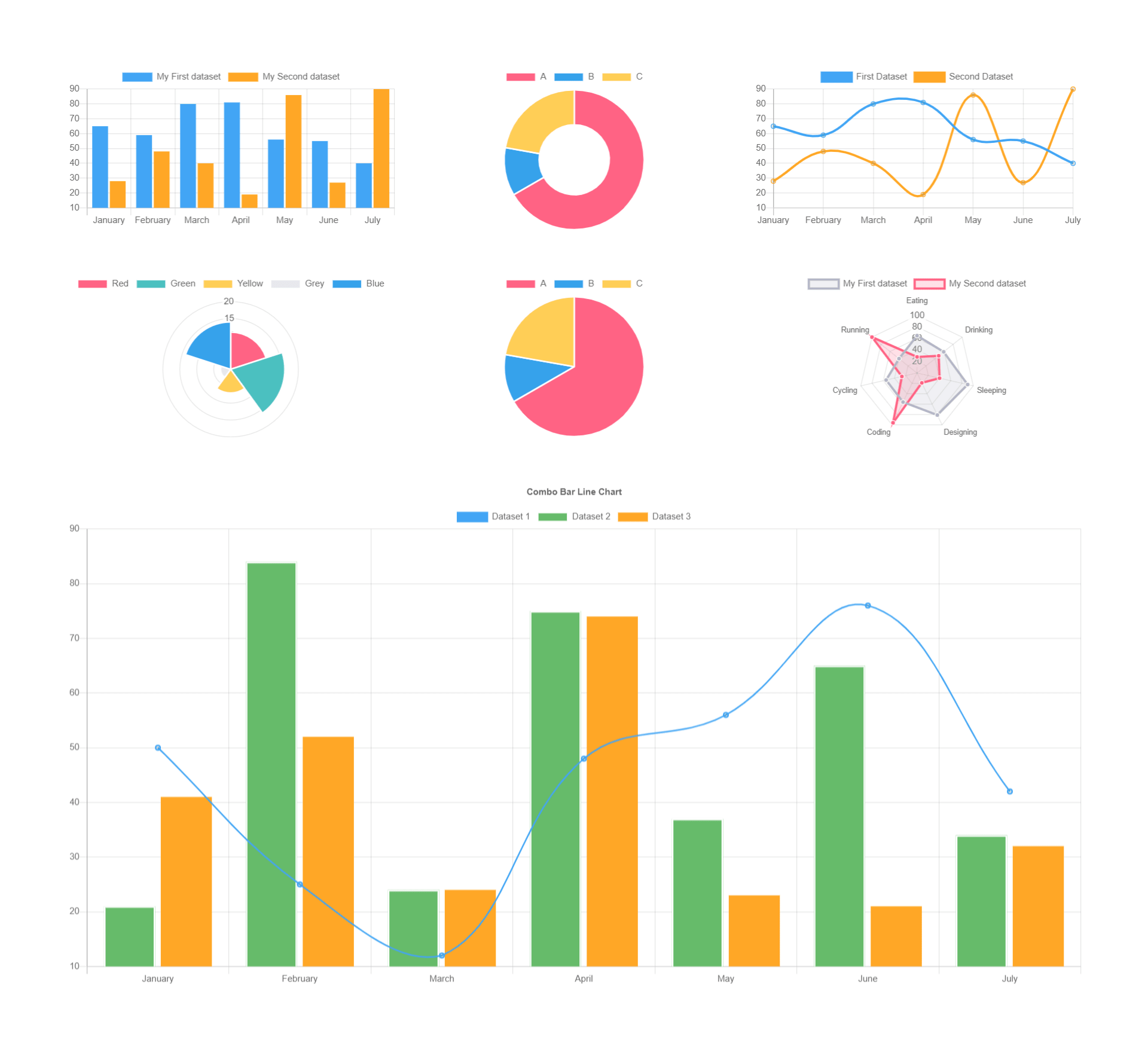


First, the chart.js package, which provides us with a set of frequently used chart types, plugins, and customization options that can be used for any type of application, not just react applications. For that, we need to install two NPM packages. This creates a new project folder react-chartjs with all the necessary files needed for a react application to run smoothly, then we proceed to remove all unnecessary files until we have a folder structure that looks like this:Īfter setting up our project, we now have to install the necessary packages to make Chart.js work in React. We start by first creating a new react application by running this NPM command: npx create-react-app react-chartjs Prerequisiteīefore we proceed, basic knowledge of JavaScript and React is required to grasp the concepts discussed in this article fully.Ĭome along and let's build together! Project Setup In this article, we will build a simple single-page application (SPA) to showcase how Chart.js can be used with React to create Line, Bar, and Pie Charts. Created and announced in 2013, it has ~60,000 Github stars and about 2.4 million weekly NPM downloads. Its component-based architecture and declarative syntax make it easy to create reusable UI components and manage complex states.Ĭhart.js is a popular, flexible, and easy-to-use open-source JavaScript library for creating responsive and customizable charts and graphs. React is a widely-used JavaScript library for building user interfaces. React and Chart.js are two popular technologies developers can use to create dynamic and interactive data visualizations. With the advent of modern web technologies, creating interactive data visualizations has become easier than ever before. Data visualization tools are powerful for analyzing and communicating complex data sets in a more accessible and intuitive way.


 0 kommentar(er)
0 kommentar(er)
